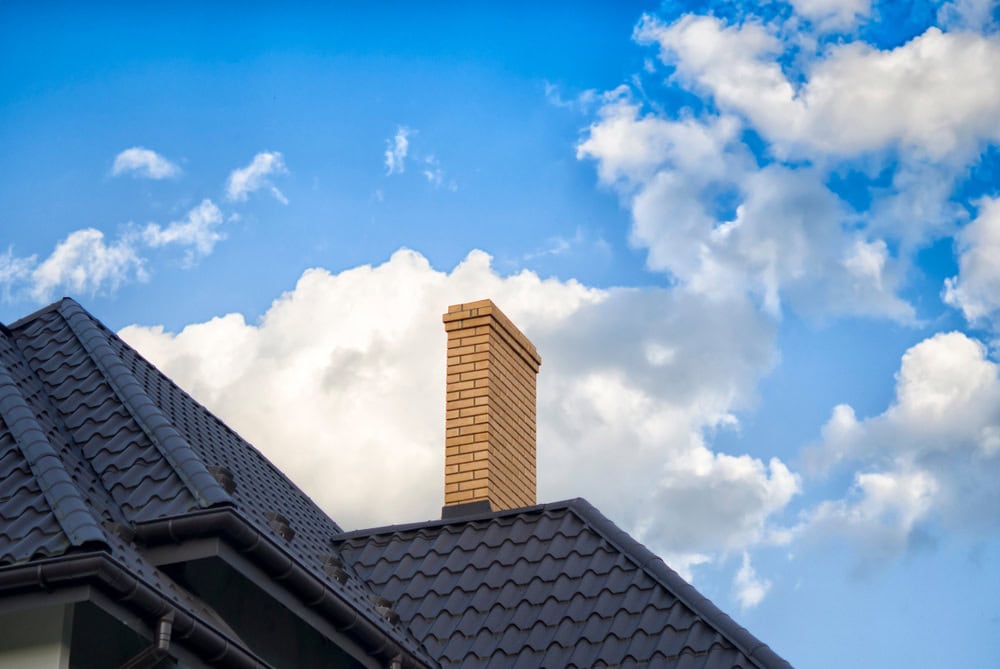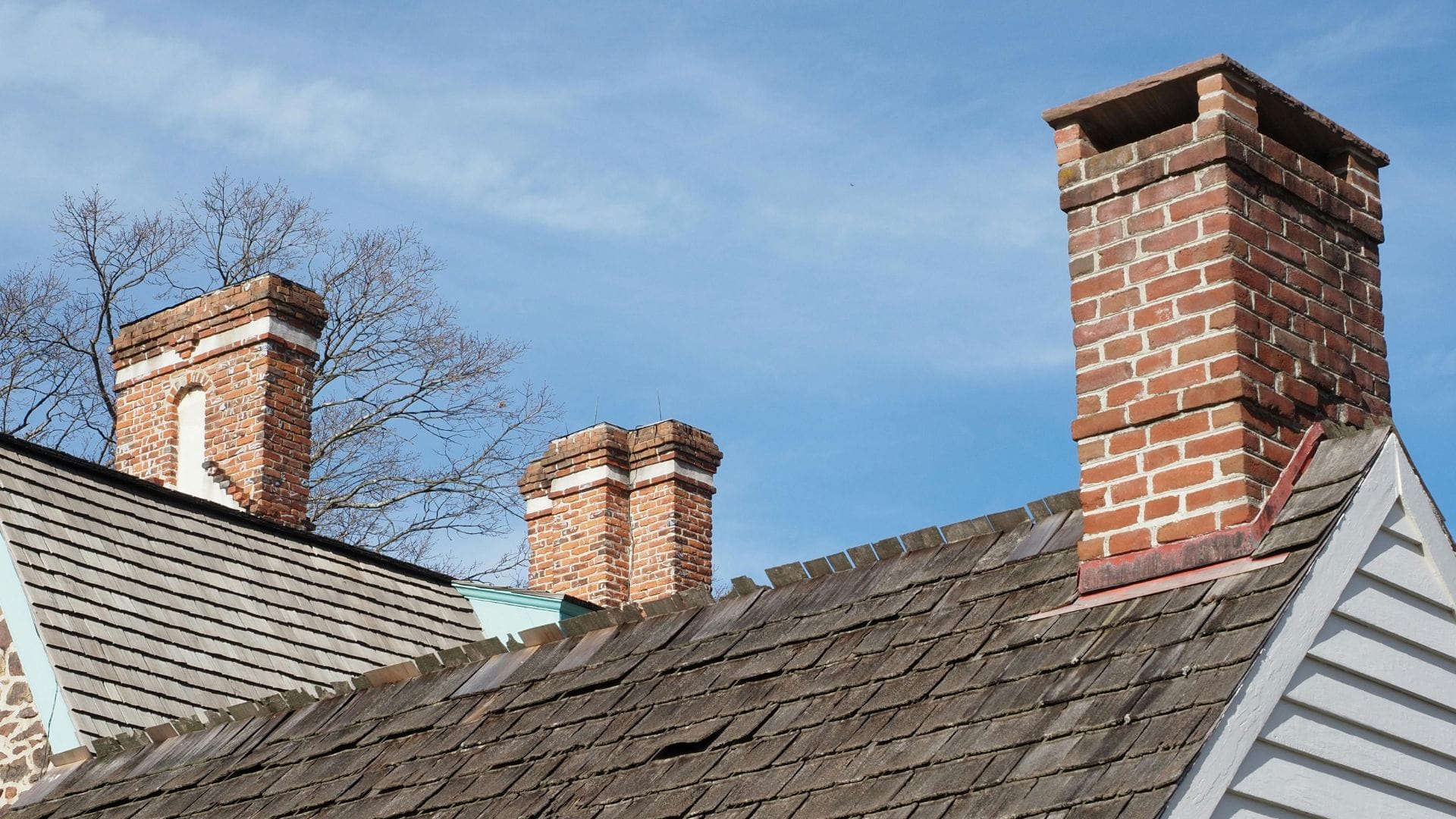Learn the real causes behind chimney odors and practical solutions that actually work for Massachusetts homeowners.
Share:

Most chimney odors stem from a few predictable sources that become more noticeable during certain conditions. The primary culprit is creosote, a tar-like byproduct that accumulates from burning wood and creates that distinctive smoky barbecue-gone-wrong smell.
Moisture plays a major role too. When rainwater mixes with existing soot and creosote deposits, it intensifies odors and can create that rotten egg smell many homeowners notice after storms. Poor ventilation, animal nests, and debris also contribute to unpleasant chimney smells.

Creosote is the most notorious offender when it comes to chimney odors. This highly flammable, tar-like substance forms when wood smoke condenses on cooler chimney surfaces during the burning process. Over time, layers build up and become absorbed into porous masonry materials.
The smell becomes particularly noticeable during warm, humid weather when oxidation amplifies the odors. Summer heat and high humidity create the perfect conditions for creosote odors to become overwhelming. Air conditioning can make the problem worse by creating negative pressure that draws these smells down through your chimney and into your living space.
What makes creosote odors so persistent is how deeply they penetrate. Unlike surface-level smells, creosote absorbs beyond the masonry surface, similar to how firebox walls become permanently stained black with use. This is why simple cleaning attempts often fail to eliminate the odor completely.
The type of chimney liner you have also affects how strong creosote odors become. More porous chimney materials absorb the smell more readily, making the problem more noticeable in homes with older clay tile liners compared to newer stainless steel installations.
Water is your chimney’s worst enemy, and it’s often the reason odor problems suddenly intensify. When rainwater seeps into your chimney through damaged caps, cracked crowns, or deteriorated flashing, it creates the perfect environment for multiple odor sources.
Moisture mixing with existing creosote and soot deposits creates particularly unpleasant smells. The combination can produce that distinctive rotten egg odor many homeowners notice after heavy rain. This happens because water reactivates dormant creosote deposits while also creating chemical reactions with sulfur compounds in the soot.
Damp conditions also encourage mold and mildew growth inside the chimney structure. These fungi thrive in the dark, moist environment and produce their own musty, earthy odors. When you light a fire, the heat causes these odors to be released directly into your living space.
Weather changes affect air pressure around your home, which can make chimney odors more noticeable. Rainfall often creates downdrafts that push smells back down the chimney instead of allowing them to vent properly. This is especially problematic in newer, tightly sealed homes where indoor air pressure differences are more pronounced.
Successfully eliminating chimney odors requires addressing the root causes rather than masking symptoms. The most effective approach starts with professional chimney cleaning to remove accumulated creosote, soot, and debris that create the foundation for most odor problems.
However, cleaning alone rarely solves persistent odor issues. Long-term solutions typically involve improving ventilation, addressing moisture problems, and sometimes installing specialized equipment like top-sealing dampers or chimney deodorants.

A thorough professional chimney cleaning forms the foundation of any effective odor elimination strategy. Certified chimney sweeps use specialized tools and techniques to remove creosote buildup, soot deposits, and debris that create the source of most chimney smells.
The cleaning process goes beyond what homeowners can accomplish with DIY methods. Professional-grade equipment removes creosote that has penetrated deep into masonry surfaces, while also clearing blockages like animal nests, leaves, and other debris that trap moisture and create additional odor sources.
Annual cleaning is particularly important for homes that use their fireplaces regularly. The National Fire Protection Association recommends yearly inspections and cleanings, not just for safety reasons but also to prevent the accumulation of materials that cause persistent odors.
For stubborn creosote odors that persist after cleaning, professional chimney services can apply specialized deodorants designed specifically for chimney systems. These products neutralize odors at the molecular level rather than simply covering them up. Some technicians also recommend placing commercial chimney deodorants or even simple solutions like baking soda in the fireplace to help absorb lingering smells.
The inspection process during professional cleaning often reveals underlying issues contributing to odor problems, such as damaged chimney caps, deteriorated flashing, or structural problems that allow moisture infiltration.
Many persistent chimney odor problems stem from negative air pressure issues that cause downdrafts, pushing smells into your home instead of venting them outside. This problem has become more common as homes have become more energy-efficient and tightly sealed.
The stack effect occurs when warm air rises inside your house, creating positive pressure in upper areas and negative pressure in lower levels. This pressure difference can draw air down through your chimney, bringing odors with it. The problem is often worse during summer months when temperature differences between inside and outside air are most pronounced.
Several solutions can address ventilation-related odor problems. Opening a window near the fireplace five or six inches provides replacement air and can immediately reduce downdrafts. For longer-term solutions, installing a top-sealing damper controlled by a cable creates an airtight seal when the fireplace isn’t in use, preventing air movement through the chimney.
Glass fireplace screens provide an additional barrier against negative air pressure effects. Some homes benefit from installing make-up air systems that provide controlled outdoor air to balance pressure differences. Wind-directional chimney caps can also help by using wind patterns to create proper draft conditions at the chimney top.
Addressing ventilation issues often requires professional assessment to determine the best solution for your specific home and chimney configuration.
While some minor odor issues can be addressed with DIY solutions, persistent or strong chimney odors typically require professional intervention. If you’ve tried basic cleaning and ventilation improvements without success, it’s time to call experienced chimney professionals who can identify and address underlying causes.
Professional services become essential when odors are accompanied by other warning signs like smoke entering your home, visible damage to chimney components, or water stains around the fireplace. These symptoms often indicate more serious issues that affect both safety and odor problems.
We provide comprehensive odor elimination services throughout Norfolk, Plymouth, and Bristol Counties, combining thorough cleaning with targeted solutions for your specific situation. Our experienced team understands the unique challenges faced by Massachusetts homeowners and can restore your fireplace to proper, odor-free operation.
Article details:
Share:
Continue learning: